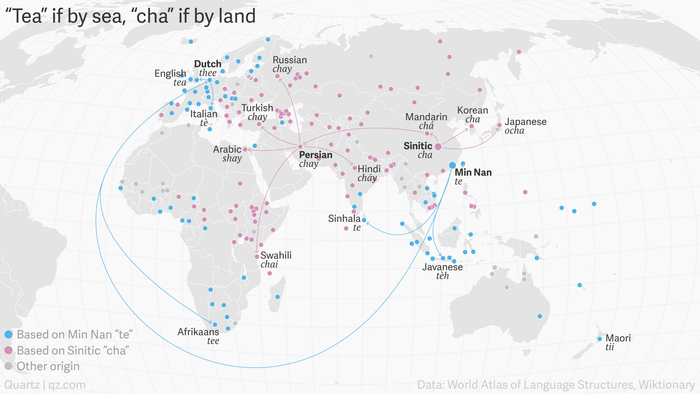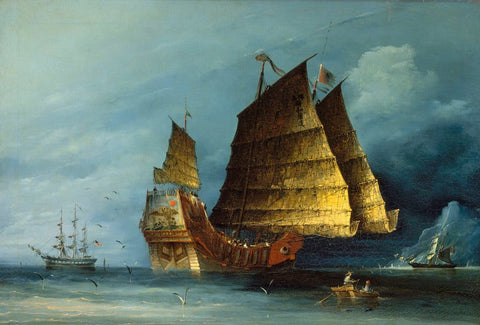Tea if by Sea, Cha if by Land

Tea is one of those beverages that are universal. People explored the world for it, fought wars for it. Some say that the American Revolution was sparked by it, with the dumping of tea in the Boston Harbor.
But tea isn't just tea. In Russia, its pronounced chay, and the Arabic word for tea is shay. So why the difference? Simple, if it came by sea its Tea, and if it came by land its Cha.
Tea came from China, however, there were two major trading ports. "Sinitic" Chinese referred to the plant as cha and primarily exported it through the silk road. Countries, where this ran through, would refer to it as cha or some variant, such as chay, or shay. It even made its way to East Africa and was called chai in Swahili!
Tea, on the other hand, was traded primarily by Dutch traders through the ports of Fujian and Taiwan. The coastal provinces of China referred to their drink as "te", which the Dutch then called "thee". As this spread around Europe, all countries started putting their own spin on the word, from Te, to Tee in South Africa, and Teh in Java. Finally, the English referred to it as Tea, which is most well known.

On the map, you may have noticed that Portugal has a pink dot. That is because they were the first European explorers in Asia, and traded through Macao whereas you may have guessed, they referred to it as Cha.
By looking at this map you can see interesting views of globalization. On one hand, the Silk Road shows over a millennium of overland trade, while the sea routes show's a smaller, 400-year-old trade route. Both trade routes had significant impacts on the world you see today, as well as thousands of smaller impacts.
Including how we name one of our favorite beverages.
